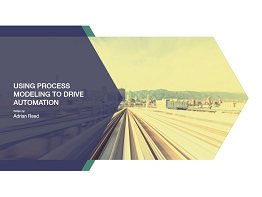There are more and more opportunities to automate processing with different forms of technology. It can be very tempting to buy a solution, and rush to implement it. Yet doing this can lead to disappointment--we might inadvertently find it is not compatible with our processes or requires a major change that we were not prepared for. A better place to start is with our processes. If we model and map our processes in a notation that both vendor and client understand--such as BPMN--we can ensure that the solution will fit. In this eBook, Adrian Reed explores the practicalities of using process models to drive automation.
In many industries, there is an ongoing trend towards automating or semi-automating routine business processes in order to create efficiencies. When the right types of processes are automated in an appropriate way, there will often be significant benefits to be realized. Done well, automation can reduce processing costs and improve customer experience. We might, for example, speed up a process that was slow and frustrating to the customer, creating benefits for us and for them.
Yet, unfortunately not all process automation initiatives have these positive effects. Without sufficient analysis we might inadvertently end up automating a bad process – which is likely to lead to a range of problems and undesired negative outcomes. We might find that people have been acting judiciously to keep the process running for years, and had developed a whole series of manual workarounds. If we do not understand the issues with the current process, then there is no way that we can resolve them. Introducing automation without simplification and rationalization of a process can simply make a bad process even worse!
In this eBook, Adrian Reed explores the practicalities of using process models to drive automation.
